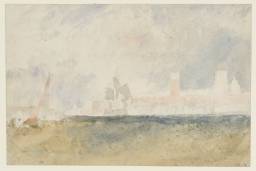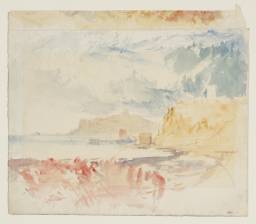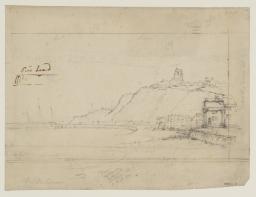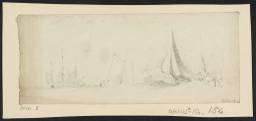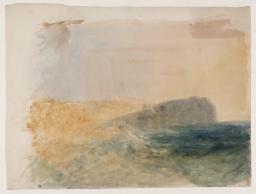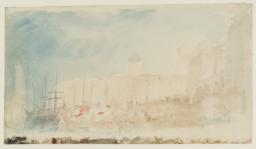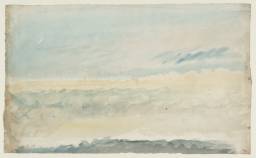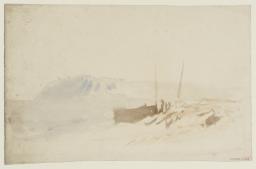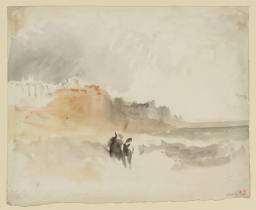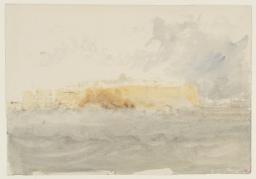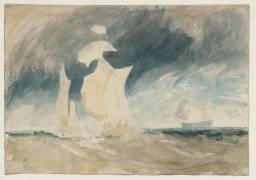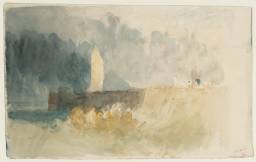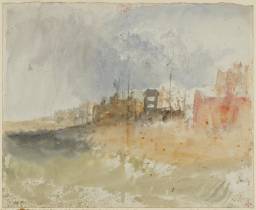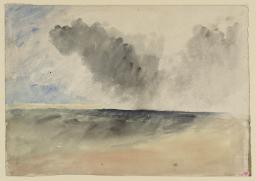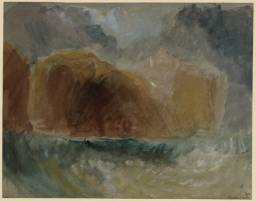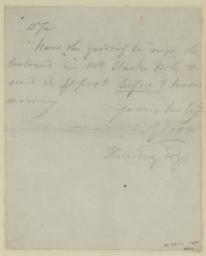Turner Bequest CCIII A– D, I; CCLXIII 27, 150, 200, 222, 227, 240, 243, 248, 255, 260, 266, 267, 270, 282, 299, 347, 270 v
References
This subset catalogues the pencil sketches and colour studies or ‘beginnings’ thought to be related to the Ports of England watercolour and mezzotint engraving series of 1825 to 1828 (Tate D18142, D18143, D18150, D18152–D18154; Turner Bequest CCVIII I, J, Q, S, T, U); those not specifically identified have been dated here to c.1822–8, the main phase of Turner’s work on the series. However, it is also possible that these studies anticipate designs for other publishing series. Indeed, Turner was working on a number of significant commissions simultaneously to the Ports including the Picturesque Views of the Southern Coast of England (1814–26), Marine Views (1822–4), and the Picturesque Views in England and Wales (1824–36).
The works in this grouping were produced by Turner to develop his ideas for a subject in terms of composition and structures of tone and colour. Whilst a number do seem to correlate to completed watercolours, others in the grouping are moreover ends in themselves and make manifest the artistic ideas, observations, and experiments occupying Turner at a certain moment, whether they continued to be developed or were left unelaborated.
The colour studies display a gamut of technical skills: experiments in brush-work effects and the diffusion of colours on papers of different textures and levels of saturation. It is clear, for example, that in almost all of these drawings Turner drenched his papers with clear or tinted water and then immediately added pigment, allowing the colours to bleed and feather into subtle gradients. This is a technique which Turner’s biographer Jack Lindsay has remarked on:
Colours are used to create recession without the least element of chiaroscuro or local effects; broad bands and opposed colour masses; all sorts of technical devices, delicate and broad, to define some momentary impression – thus, he uses the texture of paper to break up a thin wash and suggest cloud or mist, or keeps a blank area of white as a high point such as the sun.1
These experiments obviously involved a certain degree of uncertainty, yet one is left with the distinct impression, as the Turner scholar Eric Shanes writes, that ‘Turner welcomed chance effects, for they not only challenged him as a virtuoso but simultaneously they extended and enriched the range of expressive marks that were available to him’.2
Watercolour pigment was not the only medium Turner made use of in this grouping; some of the sheets have pencil under-drawings, others have been worked over with chalk or gouache to offer textural contrast. See, for example, the watercolour view of Tintagel on blue paper heightened with gouache (Tate D25470; Turner Bequest CCLXIII 347). There is also evidence of Turner’s use of the process of ‘washing-out’ in Plymouth (Tate D25272; Turner Bequest CCLXIII 150). This process is found in the representation of the rainbow in this work and involved, as Shanes writes, ‘the reactivation and removal of surface colour through the partial or complete submersion of the sheet’ and the localised rubbing out of pigment by means of a sponge, damp brush, blotting paper, or damp bread.3
Coastline and seascapes are the predominant subjects depicted in the drawings within this grouping and almost all are believed to be of locations on the southern coast of England. Eric Shanes has made much progress in attempting to decipher particular locations, however the abstract painterly style of these studies and often their lack of any identifying features can make this process very difficult indeed. The headlands surrounding the Kentish towns of Margate, Deal, and Folkestone are suggested as the locations for the vaguest of these works (Tate D25322, D25362, D25365, D25383; Turner Bequest CCLXIII 200, 240, 243, 260) whilst the Dorset town of Bridport may be the subject of a similarly indistinct colour sketch (Tate D25390; Turner Bequest CCLXIII 267). The coastal theme, however, is rather anomalously interrupted by two ‘beginnings’ thought to depict the Custom House or the Old Greenwich Hospital from the Thames in London (Tate D25349, D25378; Turner Bequest 227, 255), probably produced for the Views of London finished watercolours of 1825.
Also of note in this grouping is the drawing of Brighton beach and pump house (Tate D25292; Turner Bequest 270). That this drawing was taken on lightweight writing paper hints at what can be found on its verso (Tate D40147; Turner Bequest CCLXIII 270v): a letter written in pencil by Turner’s collaborator, the engraver George Cooke (brother of the engraver and publisher W.B. Cooke). The note offers a reminder to the viewer that whilst these studies can be seen as artworks in and for themselves, Turner painted for money: he used whatever materials that were to hand to record ideas for possible or established commissions. Also within this subset is a drawing produced specifically with printmaking in mind: a study of Folkestone (Tate D17761; Turner Bequest CCIII D) which contains a series of detailed annotations thought to be instructions to a prospective engraver.
Other drawings in this grouping do appear to correspond directly to finished works. These are the studies for the Ports of England views of Scarborough (Tate D25149; Turner Bequest CCLXIII 27); Plymouth (Tate D25272, D25344; Turner Bequest CCLXIII 150, 222); Portsmouth (D17758; Turner Bequest CCIII A); Sheerness (Tate D17766, D25389; Turner Bequest CCLXIII 266, CCIII I); and Ramsgate (Tate D25422; Turner Bequest, 299).
How to cite
Alice Rylance-Watson, ‘‘Ports of England’ Studies c.1822–8’, subset, March 2013, in David Blayney Brown (ed.), J.M.W. Turner: Sketchbooks, Drawings and Watercolours, Tate Research Publication, September 2014, https://www

